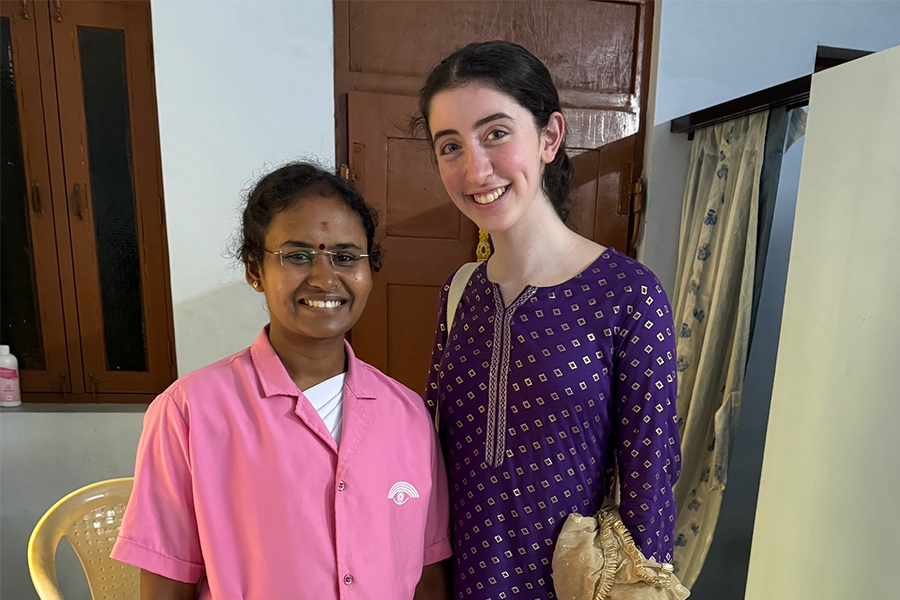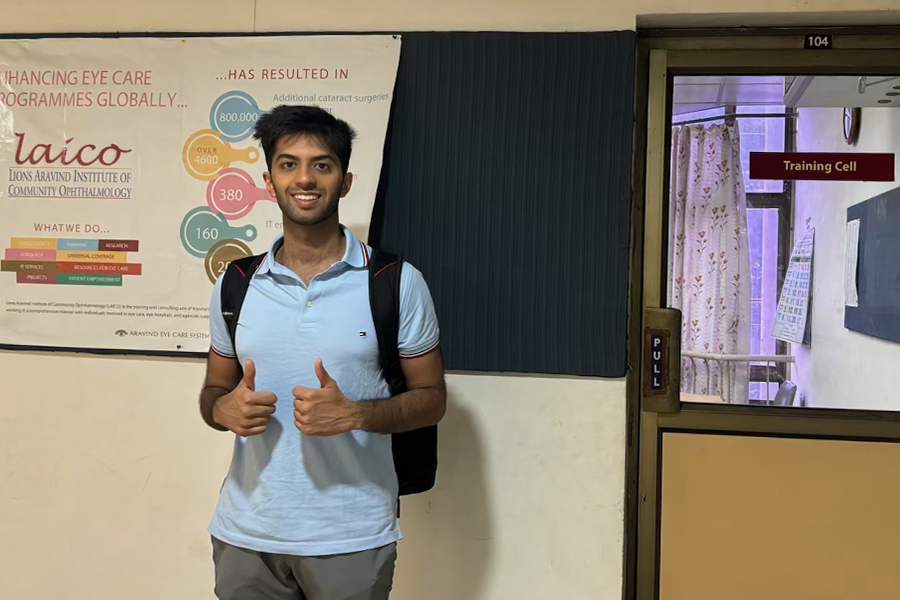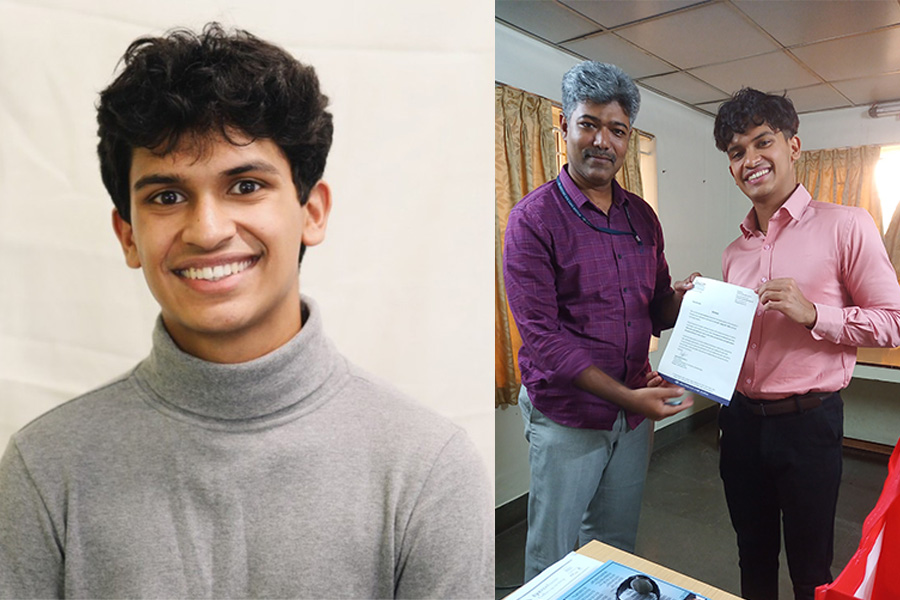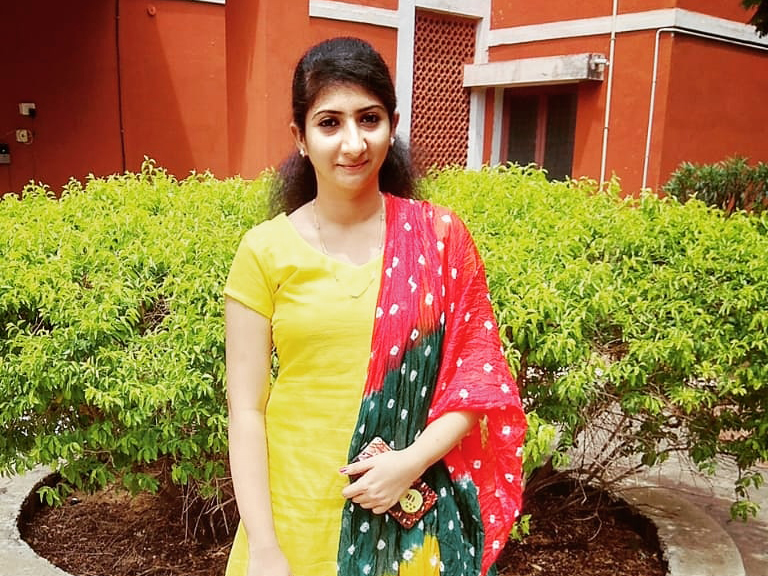Hana Matsuda
Thinking about BE Senior Design while working at Aravind
Hi everyone, welcome (back) to my blog post! I am Hana Matsuda, 2024 Aravinder.
(Brief introduction of myself: I am a student at the University of Pennsylvania, class of 2025, studying bioengineering. Originally from Japan, and love outdoor activities and teaching.)
I’ve just got back to the US – it’s been very hectic since I finished my final presentation on the last day of my time at Aravind, but finally it’s time to write about my project.
Working on my project, I learned lots of lessons as an engineer.
I consider the failure as a pathway to a successful Senior Design, where bioengineering seniors build biomedical devices as a group of 4-5 people.
This way, I thought about Senior Design a lot despite being in India. In a sense, this article is a memorandum for me next academic year.
Overview of My Project
My project was to develop models for MLOPs (mid-level ophthalmic personels or “nurses”) to practice 6 of the clinical skills (Figure 4-1). Details aside, what’s common among the 6 skills is that MLOPs directly address eyes, and failure could lead to injuries.
The key stakeholders were experienced MLOPs (trainers), students (trainees), training division (academic office), and material suppliers (hospital and Aurolab). Aurolab is a manufacturing division of the Aravind Eye Care System.
Expected deliverables were a working model for each skill, along with the result of an evaluation study to assess the effectiveness of the models for training.
Actual deliverables included a working model for each skill, 2D model for ECG leads placement training, along with the result of an evaluation study for one of the models.
4 Lessons that I Learned from the Project
#1: Direct communication with stakeholders is the key
The first lesson that I learned was the power of face-to-face communication with stakeholders.
Face-to-face communication is powerful.
At first, I was reliant on one of my collaborators to collect materials for making prototypes.
However, getting materials often turned out to be a bottleneck of my work.
The material suppliers would have thought, “some foreigner wants gloves for some work she is working on”.
To address this, I visited every material supplier with my collaborator while developing prototypes in hand. Knowing who I was and what I was working on, they became more willing and quick to supply me with materials.
They started to think, “Hana wants gloves to make models that we are using to train our future MLOPs”.
Not only my work sped up, but also going to see them became one of my favorite moments of my day.
#2: Every step of my work should have evidence
The second lesson that I learned was that everything that I do should be based on evidence.
To make a model for duct syringing skill, I needed to mimic ampulla, canaliculus, and nasolacrimal duct using a tube.
(In duct syringing skill, you inject water using syringe through a punctum to check the obstruction of lacrimal duct)
I was using what’s called a “butterfly tube” simply because it was given by one of the MLOPs when I asked for a narrow tube and kind of worked for my purpose.
However, when my supervisor asked me why I am sticking to the butterfly line, I realized that I had no reason to.
Just because one thing that I have right now works does not mean that I can stop exploring – sounds too simple looking back.
After testing multiple different types of tubes available at the hospital, I came to a conclusion that butterfly line was the best.
Although the conclusion was unchanged, now I’ve got a reason why I should use the butterfly line.
#3: Always consider user interface
The third lesson that I learned was that it’s important to always keep in mind the user interface.
Again when I was making a model for duct syringing, I bent the tube to accurately mimic the “2 mm vertical, 8 mm horizontal” structure of canaliculus.
I was thinking, “I did my homework on anatomy so this should be perfect!” (I had evidence this time).
However, when I had some experienced MLOPs try on the model, they did not like the tube for being too inflexible.
According to them, rotation of the syringe needle inside canaliculus is the key thing to practice, but they could not do that.
Next day, when I made the tube straight, MLOPs preferred this for its similarity to the actual lacrimal duct.
From this experience I learned that a realistic model does not automatically mean a good model for practice, and my focus should always be on user interface.
#4: Set “efficient communication with stakeholders” as a short term goal
Everybody at Aravind is very busy. I often seeked advice on my models from MLOPs but they are usually only available after 3 or 4pm.
So, I need to make the most of the time I have with them.
Gradually, I started to back-calculate what to do based on my meeting schedule. For example, I have always thought, “what needs to be done to maximize the efficiency of the meeting with XYZ at 4pm?”, “what questions would XYZ ask me, and what should I do by then to answer the question logically?”
This strategy worked pretty well. By always thinking about stakeholders, I was working for them, not for me, and not working for the sake of working.
For Senior Design
I believe all of the lessons mentioned above will be helpful for the Senior Design Project next semester, and beyond.
One thing that’s very different is that Senior Design is a group project. This means that we will need to communicate very well as a group, and everybody has to show approximately the same level of commitment – both of which were not a problem when I was working by myself this summer.
That being said, I loved having the autonomy to decide what to do, not having a lot of deadlines as in typical college courses. I am excited to work on another design project with some of my closest friends in bioengineering this coming year.
As always, thank you for reading til the end! I am planning to write the 5th blog post about a month from now — I need some time to digest this summer first!










